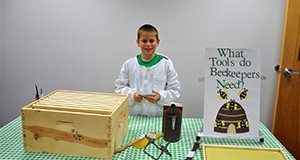 A visual presentation, either a demonstration or an illustrated talk, is a teaching method in which the presenter shares information with an audience with the assistance of visual aids such as posters, models, and computer presentation software. This 4-page fact sheet covers the method of delivery, the plan, the visuals, how to look sharp and to have a sharp presentation. Written by Stacey Ellison, and published by the UF Department of 4-H Youth Development, June 2015.
A visual presentation, either a demonstration or an illustrated talk, is a teaching method in which the presenter shares information with an audience with the assistance of visual aids such as posters, models, and computer presentation software. This 4-page fact sheet covers the method of delivery, the plan, the visuals, how to look sharp and to have a sharp presentation. Written by Stacey Ellison, and published by the UF Department of 4-H Youth Development, June 2015.
http://edis.ifas.ufl.edu/4h163
Category: 4-H Youth Development
Observation Bee Hives
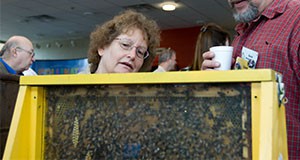
The use of observation bee hives continues to interest a variety of people. This is not surprising. The observation hive is one of the primary research and educational tools in apiculture. It is both educational and entertaining. Observation bee hives can be used to enhance public relations and marketing programs. But a great deal of time and energy is needed to set up a hive and keep it going. Maintenance can be expensive and time consuming, especially if the hive is to be used as a permanent display for the general public. This 3-page fact sheet provides sources for building observation hives and tips for maintenance. Written by David Hall, James D. Ellis, and Malcolm Sanford, and published by the UF Department of Entomology and Nematology, March 2015. (UF/IFAS photo by Tyler Jones)
http://edis.ifas.ufl.edu/mg320
4-H School Enrichment: A Guide for 4-H Faculty and Staff
 School Enrichment is a partnership between the University of Florida/IFAS Extension Service and a school district to provide educational content in various subject areas. Extension values its relationship with the schools and welcomes the opportunity to provide research-based curricula for classroom use. This 8-page fact sheet includes a desciption of 4-H School Enrichment and its benefits, procedures for starting and scheduling a program, resources and guidelines, and tips for promoting involvement to other 4-H programs. Adapted for use in Florida by Tracy A. Tesdall and published by the UF Department of 4-H Youth Development, April 2015.
School Enrichment is a partnership between the University of Florida/IFAS Extension Service and a school district to provide educational content in various subject areas. Extension values its relationship with the schools and welcomes the opportunity to provide research-based curricula for classroom use. This 8-page fact sheet includes a desciption of 4-H School Enrichment and its benefits, procedures for starting and scheduling a program, resources and guidelines, and tips for promoting involvement to other 4-H programs. Adapted for use in Florida by Tracy A. Tesdall and published by the UF Department of 4-H Youth Development, April 2015.
http://edis.ifas.ufl.edu/4h324
Getting Started in the 4-H Embryology Project: Tips for 4-H Agents and Teachers
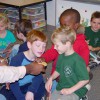 Usually considered an enrichment project for classrooms, the 4-H Embryology Project can also be modified for club or individual use. In it, young people use an incubator to grow avian embryos (inside fertile eggs) through the hatching process. Students learn basic biology and life science while they eagerly look forward to hatching chicks. This 5-page fact sheet describes the necessary equipment and other resources and provides tips and suggestions to increase the hatchability of fertile avian eggs. Written by Marcus Boston, Chris Decubellis, and Judith Levings, and published by the UF Department of 4-H Youth Development, April 2015. (Photo: Marcus Boston, UF/IFAS)
Usually considered an enrichment project for classrooms, the 4-H Embryology Project can also be modified for club or individual use. In it, young people use an incubator to grow avian embryos (inside fertile eggs) through the hatching process. Students learn basic biology and life science while they eagerly look forward to hatching chicks. This 5-page fact sheet describes the necessary equipment and other resources and provides tips and suggestions to increase the hatchability of fertile avian eggs. Written by Marcus Boston, Chris Decubellis, and Judith Levings, and published by the UF Department of 4-H Youth Development, April 2015. (Photo: Marcus Boston, UF/IFAS)
http://edis.ifas.ufl.edu/4h367
Cooperative Learning for 4-H
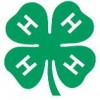 A simple way to facilitate discovery through cooperative learning, in which learners work together to meet a shared goal with a leader guiding them to encourage group interactions. This 5-page fact sheet provides teaching techniques and applies cooperative learning to natural resources and environmental literacy in the context of 4-H. Written by Jessica McIntosh and Martha Monroe, and published by the UF Department of School of Forest Resources and Conservation, September 2014.
A simple way to facilitate discovery through cooperative learning, in which learners work together to meet a shared goal with a leader guiding them to encourage group interactions. This 5-page fact sheet provides teaching techniques and applies cooperative learning to natural resources and environmental literacy in the context of 4-H. Written by Jessica McIntosh and Martha Monroe, and published by the UF Department of School of Forest Resources and Conservation, September 2014.
http://edis.ifas.ufl.edu/fr390
The Extension Services-237 Report: Everything You Need to Know
 The Extension Services-237 (ES-237) is a report of the Cooperative Extension Service that consists of enrollment statistics for youth ages 5–18 participating in Extension youth programs and the volunteers providing service to these programs. Since partial funding for Extension youth programs is received through the USDA, each county and state must report each year on the race, gender, grade, and residence of each participant in these programs. In Florida, the report is completed by each UF/IFAS county Extension office each year using 4HOnline, then submitted to Florida 4-H state headquarters where they are compiled into a single state report and submitted to the National Institute of Food and Agriculture (NIFA) at the United States Department of Agriculture (USDA). This 6-page fact sheet was written by Ben Knowles and Tracy A. Tesdall, and published by the UF Department of 4-H Youth Development, October 2014.
The Extension Services-237 (ES-237) is a report of the Cooperative Extension Service that consists of enrollment statistics for youth ages 5–18 participating in Extension youth programs and the volunteers providing service to these programs. Since partial funding for Extension youth programs is received through the USDA, each county and state must report each year on the race, gender, grade, and residence of each participant in these programs. In Florida, the report is completed by each UF/IFAS county Extension office each year using 4HOnline, then submitted to Florida 4-H state headquarters where they are compiled into a single state report and submitted to the National Institute of Food and Agriculture (NIFA) at the United States Department of Agriculture (USDA). This 6-page fact sheet was written by Ben Knowles and Tracy A. Tesdall, and published by the UF Department of 4-H Youth Development, October 2014.
http://edis.ifas.ufl.edu/4h345
Plant Connections Member’s Manual
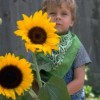 The Kids Growing with Plant Connections Youth Workbook (4H194/4H PSM 11) is aimed at educating youth about the basics of horticulture. Youth will be exposed to information on plants and the plant kingdom. Lessons include: What Is a Plant?–Why Are Plants Important?–What Makes Plants Grow?–How to Grow Plants–How to Select and Handle Plants. The Plant Connections Leader’s Guide (4H192/4H PSL 21) is used in conjunction with this youth workbook. This 25-page workbook was written by Janice Easton and Deborah J. Glauer, and published by the UF Department of 4-H Youth Development, January 2015.
The Kids Growing with Plant Connections Youth Workbook (4H194/4H PSM 11) is aimed at educating youth about the basics of horticulture. Youth will be exposed to information on plants and the plant kingdom. Lessons include: What Is a Plant?–Why Are Plants Important?–What Makes Plants Grow?–How to Grow Plants–How to Select and Handle Plants. The Plant Connections Leader’s Guide (4H192/4H PSL 21) is used in conjunction with this youth workbook. This 25-page workbook was written by Janice Easton and Deborah J. Glauer, and published by the UF Department of 4-H Youth Development, January 2015.
http://edis.ifas.ufl.edu/4h194
Kids Growing with Plant Connections Leader’s Guide (4H PSL 21)
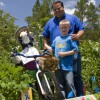 This 195-page curriculum guide is aimed at educating youth about the basics of horticulture. Youth will be exposed to information on plants and the plant kingdom. Written by Janice Easton and Deborah J. Glauer, and published by the UF Department of 4-H Youth Development, January 2015.
This 195-page curriculum guide is aimed at educating youth about the basics of horticulture. Youth will be exposed to information on plants and the plant kingdom. Written by Janice Easton and Deborah J. Glauer, and published by the UF Department of 4-H Youth Development, January 2015.
Single PDF:http://edis.ifas.ufl.edu/4h192
Individual Chapters:
A Guide to the Florida 4-H Council
 The 4-H Program utilizes many tools or methods to provide educational experiences for youth. The 4-H Council (or other relevant named group) at county, district, and state levels is one of these tools. A Council is an elected representative group of 4-H members who meet, discuss, plan, and assist in carrying out 4-H programs and activities in the interest of the total membership. The Council provides a link between local clubs or groups and County 4-H Programs, between County Programs and District 4-H Programs, and between District Programs and State 4-H Programs. This 11-page guide was written by Stacey E. Ellison, Tracy Tesdall, J. A. Rutledge, Joy C. Jordan, and Wendi Armstrong, and published by the UF Department of 4-H Youth Development, December 2014.
The 4-H Program utilizes many tools or methods to provide educational experiences for youth. The 4-H Council (or other relevant named group) at county, district, and state levels is one of these tools. A Council is an elected representative group of 4-H members who meet, discuss, plan, and assist in carrying out 4-H programs and activities in the interest of the total membership. The Council provides a link between local clubs or groups and County 4-H Programs, between County Programs and District 4-H Programs, and between District Programs and State 4-H Programs. This 11-page guide was written by Stacey E. Ellison, Tracy Tesdall, J. A. Rutledge, Joy C. Jordan, and Wendi Armstrong, and published by the UF Department of 4-H Youth Development, December 2014.
http://edis.ifas.ufl.edu/4h315
4-H Pizza Garden: An Agricultural Adventure
 This curriculum was designed for educators to teach young people about where their food originates by using something children love to eat…PIZZA! According to a recent Gallup poll, kids between the ages of 3 and 11 prefer pizza to all other foods for lunch and dinner. Americans eat about 100 acres of pizza each day, or 350 slices per second!This 4-H in the Classroom project, originating in Pinellas County, Florida, was designed for grades 3–5, but can be adapted to serve other grade levels. The lessons cover subject areas such as mathematics, social studies, language arts, and science. It has been used in Pinellas County very successfully since 2000 by the 4-H Program in collaboration with their Florida Ag in the Classroom Initiative. This 89-page fact sheet was written by Janet Golden, Joy Jordan, Nan Jensen, Betty Lipe, Millie Ferrer, Anne Fugate, Erin Karkheck, Linda Bobroff, Karla Shelnutt, and Tracy Tesdall, and published by the UF Department of 4-H Youth Development, November 2014.
This curriculum was designed for educators to teach young people about where their food originates by using something children love to eat…PIZZA! According to a recent Gallup poll, kids between the ages of 3 and 11 prefer pizza to all other foods for lunch and dinner. Americans eat about 100 acres of pizza each day, or 350 slices per second!This 4-H in the Classroom project, originating in Pinellas County, Florida, was designed for grades 3–5, but can be adapted to serve other grade levels. The lessons cover subject areas such as mathematics, social studies, language arts, and science. It has been used in Pinellas County very successfully since 2000 by the 4-H Program in collaboration with their Florida Ag in the Classroom Initiative. This 89-page fact sheet was written by Janet Golden, Joy Jordan, Nan Jensen, Betty Lipe, Millie Ferrer, Anne Fugate, Erin Karkheck, Linda Bobroff, Karla Shelnutt, and Tracy Tesdall, and published by the UF Department of 4-H Youth Development, November 2014.
http://edis.ifas.ufl.edu/4h356
Saddle and Tack Care in Hot and Humid Environments
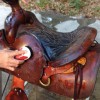 The South’s climate is appealing for equestrian activities. While riders enjoy the weather, it creates some challenges in caring for saddles and other tack. When the weather becomes hot and the humidity climbs and the rains are frequent, a tack room can become a breeding ground for mold and mildew. There are several things a rider can do, however, to lower the incidence of mildew on saddles and tack. This 3-page fact sheet was written by Joel McQuagge, Todd Thrift, and Ed Johnson, and published by the UF Department of Animal Sciences, November 2014. (Photo credit: Joel McQuagge, UF/IFAS)
The South’s climate is appealing for equestrian activities. While riders enjoy the weather, it creates some challenges in caring for saddles and other tack. When the weather becomes hot and the humidity climbs and the rains are frequent, a tack room can become a breeding ground for mold and mildew. There are several things a rider can do, however, to lower the incidence of mildew on saddles and tack. This 3-page fact sheet was written by Joel McQuagge, Todd Thrift, and Ed Johnson, and published by the UF Department of Animal Sciences, November 2014. (Photo credit: Joel McQuagge, UF/IFAS)
http://edis.ifas.ufl.edu/an303
Aquatic and Marine Ecosystems curriculum
 The new Florida 4-H Aquatic and Marine Ecosystems: Leader’s Activity Guide helps leaders address the 4-H Science Initiative and is part of the Environmental Sciences Framework, OUR NATURAL WORLD. This framework includes the basic premise that aquatic/marine environments are important in children’s lives, particularly to those children in Florida. The 4-H Aquatic and Marine Ecosystems curriculum provides an opportunity for young people to practice a variety of life skills while learning marine science concepts. The curriculum also utilizes science inquiry as a way for young people (9-14) to gain a deeper curiosity about the natural world. Written by Karen Blyler and Joy Jordan, and published by the UF Department of 4-H Youth Development, November 2014.
The new Florida 4-H Aquatic and Marine Ecosystems: Leader’s Activity Guide helps leaders address the 4-H Science Initiative and is part of the Environmental Sciences Framework, OUR NATURAL WORLD. This framework includes the basic premise that aquatic/marine environments are important in children’s lives, particularly to those children in Florida. The 4-H Aquatic and Marine Ecosystems curriculum provides an opportunity for young people to practice a variety of life skills while learning marine science concepts. The curriculum also utilizes science inquiry as a way for young people (9-14) to gain a deeper curiosity about the natural world. Written by Karen Blyler and Joy Jordan, and published by the UF Department of 4-H Youth Development, November 2014.
- Introduction
- Lesson 1: Aquatic and Marine Ecosystem Connections
- Lesson 2: Wetland Ecosystems: Freshwater Marshes and Swamps
- Lesson 3: Aquatic Ecosystems: Lakes, Springs, and Rivers
- Lesson 4: Coastal Ecosystems: Beach, Estuary, Marsh, and Swamp
- Lesson 5: Marine Ecosystems: Coral Reefs and Open Ocean
- Appendices: Glossary and Additional Resources
- Facilitator Evaluation
Fins & Scales: An Introduction to Bony Fish : A Marine Science Project Guide for 4-H Leaders and Educators
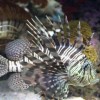 The Fins and Scales Project is intended for youth age 11-13 (Intermediate 4-Hers). The Leaders Guide follows the layout of the Youth Project Book and provides a suggested approach for each section. Each section of the Leaders Guide contains: Additional background information, answer key, additional activities, opportunities to review, “dive deeper,” and “think like a scientist.” This 52-page project guide was written by Karen Blyler, and published by the UF Department of 4-H Youth Development, October 2014.
The Fins and Scales Project is intended for youth age 11-13 (Intermediate 4-Hers). The Leaders Guide follows the layout of the Youth Project Book and provides a suggested approach for each section. Each section of the Leaders Guide contains: Additional background information, answer key, additional activities, opportunities to review, “dive deeper,” and “think like a scientist.” This 52-page project guide was written by Karen Blyler, and published by the UF Department of 4-H Youth Development, October 2014.
http://edis.ifas.ufl.edu/4h355
Fins & Scales: An Introduction to Bony Fish : A Marine Science Project Book for 4-H Intermediate Members
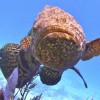 In this project youth will learn about fish and their adaptations for living in water. This 48-page Intermediate level (ages 11-13) project book was written by Karen Blyler, and published by the UF Department of 4-H Youth Development, October 2014.
In this project youth will learn about fish and their adaptations for living in water. This 48-page Intermediate level (ages 11-13) project book was written by Karen Blyler, and published by the UF Department of 4-H Youth Development, October 2014.
Contents: A. What is a fish? B. How do fins help a fish? C. How does body shape help a fish? D. How does body color help a fish? E. Why do fish have different mouths? F. Why do fish have scales? G. How can we determine a fish’s age?
http://edis.ifas.ufl.edu/4h354
Running a Smooth 4-H Business Meeting
 A quality 4-H club meeting consists of three main parts: (1) the business meeting, (2) an educational component, and (3) a recreational component. This 4-page fact sheet focuses on running a smooth 4-H business meeting. Written by Chris DeCubellis, and published by the UF Department of 4-H Youth Development, July 2014.
A quality 4-H club meeting consists of three main parts: (1) the business meeting, (2) an educational component, and (3) a recreational component. This 4-page fact sheet focuses on running a smooth 4-H business meeting. Written by Chris DeCubellis, and published by the UF Department of 4-H Youth Development, July 2014.
http://edis.ifas.ufl.edu/4h344
Florida 4-H Officer's Handbook
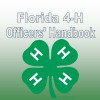 The duties and responsibilities of each of the club officer roles are outlined in this helpful guide. It also includes a 4-H club meeting checklist and information about club performance recognition. This 12-page fact sheet was written by Judith Levings, Ali Baker, Sarah Hensley, Stacey Ellison, and published by the UF Department of 4-H Youth Development, September 2014.
The duties and responsibilities of each of the club officer roles are outlined in this helpful guide. It also includes a 4-H club meeting checklist and information about club performance recognition. This 12-page fact sheet was written by Judith Levings, Ali Baker, Sarah Hensley, Stacey Ellison, and published by the UF Department of 4-H Youth Development, September 2014.
http://edis.ifas.ufl.edu/4h049
Florida 4-H Treasurer's Manual and Record Book
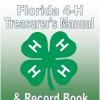 Being the treasurer is a very important position in your club. Your fellow 4-H Club Members have shown their confidence in you by letting you have this responsibility. As treasurer, you will be responsible for taking care of the club’s money, bank accounts, or other money matters. This 32-page manual and record book has been updated by Judith Levings, Sarah Hensley, and Stacey Ellison, and published by the UF Department of 4-H Youth Development, September 2014.
Being the treasurer is a very important position in your club. Your fellow 4-H Club Members have shown their confidence in you by letting you have this responsibility. As treasurer, you will be responsible for taking care of the club’s money, bank accounts, or other money matters. This 32-page manual and record book has been updated by Judith Levings, Sarah Hensley, and Stacey Ellison, and published by the UF Department of 4-H Youth Development, September 2014.
http://edis.ifas.ufl.edu/4h012
4-H Project Learning
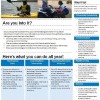 A project is a planned series of learning experiences of six hours or more within a particular area of youth interest (Florida 4-H definition). The purpose of a 4-H project is to promote mastery of subject matter and to foster life skill development. This 4-page fact sheet was written by Judith Levings, and published by the UF Department of 4-H Youth Development, August 2014.
A project is a planned series of learning experiences of six hours or more within a particular area of youth interest (Florida 4-H definition). The purpose of a 4-H project is to promote mastery of subject matter and to foster life skill development. This 4-page fact sheet was written by Judith Levings, and published by the UF Department of 4-H Youth Development, August 2014.
http://edis.ifas.ufl.edu/4h343
Protecting Youth and Volunteers by Planning Ahead, Reducing Risk
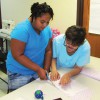 The UF/IFAS Extension 4-H Youth Development Program is committed to the safety and well-being of its youth as well as the volunteers who help deliver 4-H programs under the supervision of 4-H faculty and staff. All things in life involve some sort of risk. This is especially true when working with youth, but there are many ways that volunteers can minimize this risk and lead safe 4-H activities. Proper planning and common sense certainly go a long way. Although not to be considered legal advice, here are some facts and issues to know and keep in mind while serving as a 4-H volunteer. This 3-page fact sheet was written by Keith G. Diem, and published by the UF Department of 4-H Youth Development, July 2014.
The UF/IFAS Extension 4-H Youth Development Program is committed to the safety and well-being of its youth as well as the volunteers who help deliver 4-H programs under the supervision of 4-H faculty and staff. All things in life involve some sort of risk. This is especially true when working with youth, but there are many ways that volunteers can minimize this risk and lead safe 4-H activities. Proper planning and common sense certainly go a long way. Although not to be considered legal advice, here are some facts and issues to know and keep in mind while serving as a 4-H volunteer. This 3-page fact sheet was written by Keith G. Diem, and published by the UF Department of 4-H Youth Development, July 2014.
http://edis.ifas.ufl.edu/4h342
Positive Discipline for Youth
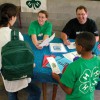 Working with youth, especially other people’s, can be a challenge. While some are better behaved than others, they all need acceptance and the opportunity to learn. Especially in groups of mixed ages, experience, or interests, the challenge of a youth leader is to see that disruptive youth do not prevent others from learning or having fun. Their very presence in the group, combined with your wise guidance, will help them learn what is socially acceptable and how to do what is right. This information sheet will help you to understand youth better and to provide some ideas on how to deal with the unruly kids with minimal disruption of the learning situation. This 5-page fact sheet was written by Heidi L. Radunovich, Keith G. Diem, and Georgene Bender, and published by the UF Department of 4-H Youth Development, July 2014.
Working with youth, especially other people’s, can be a challenge. While some are better behaved than others, they all need acceptance and the opportunity to learn. Especially in groups of mixed ages, experience, or interests, the challenge of a youth leader is to see that disruptive youth do not prevent others from learning or having fun. Their very presence in the group, combined with your wise guidance, will help them learn what is socially acceptable and how to do what is right. This information sheet will help you to understand youth better and to provide some ideas on how to deal with the unruly kids with minimal disruption of the learning situation. This 5-page fact sheet was written by Heidi L. Radunovich, Keith G. Diem, and Georgene Bender, and published by the UF Department of 4-H Youth Development, July 2014.
http://edis.ifas.ufl.edu/4h341